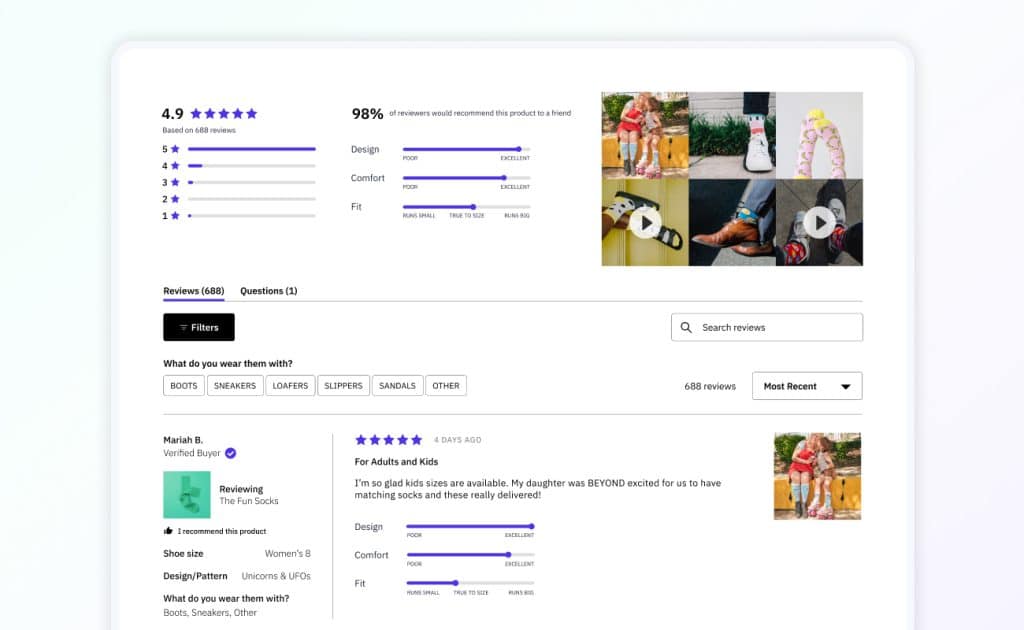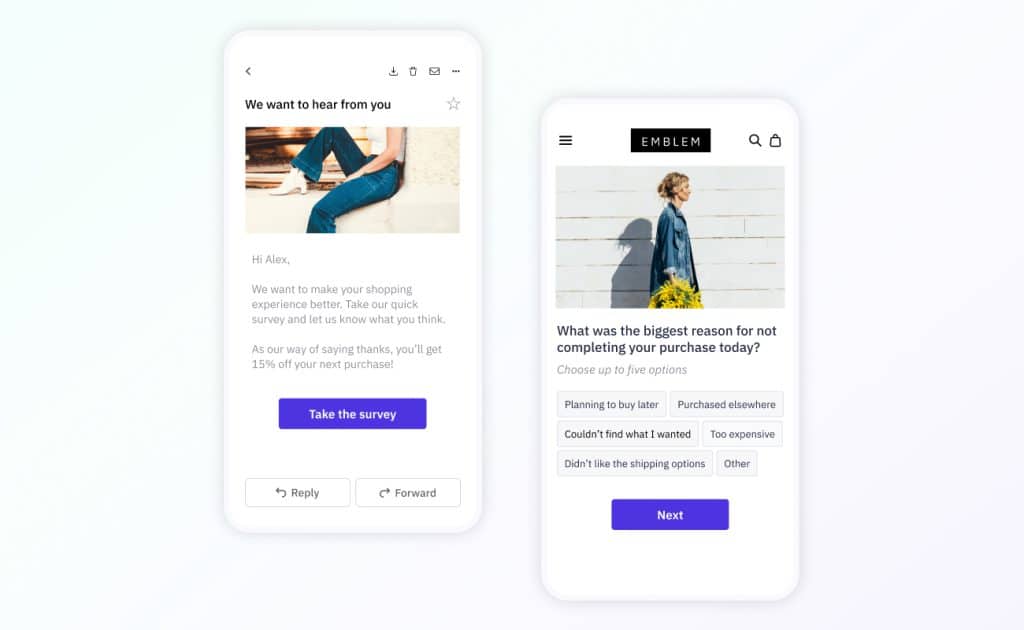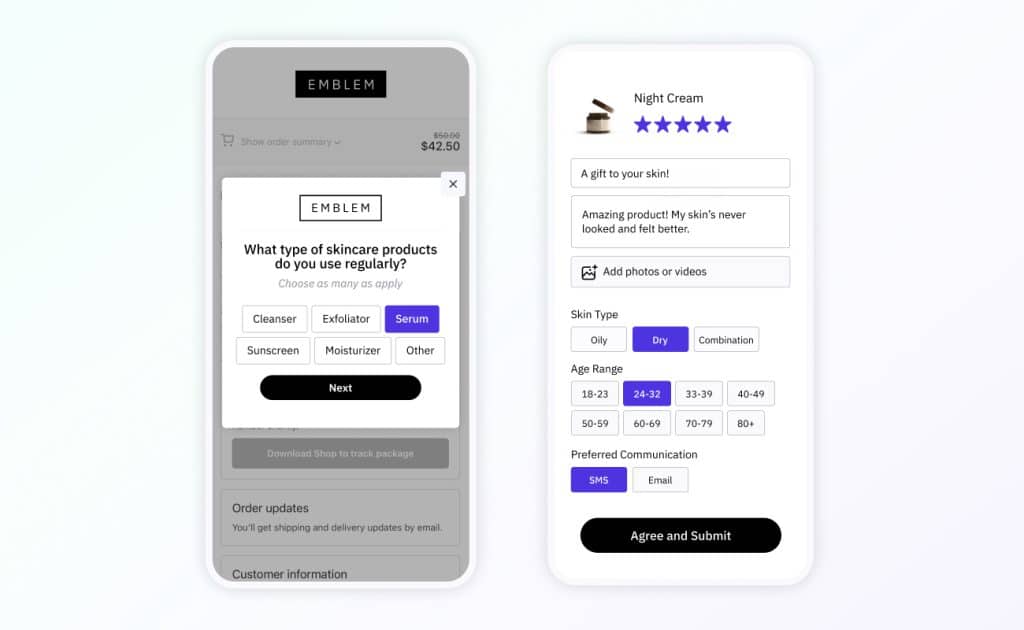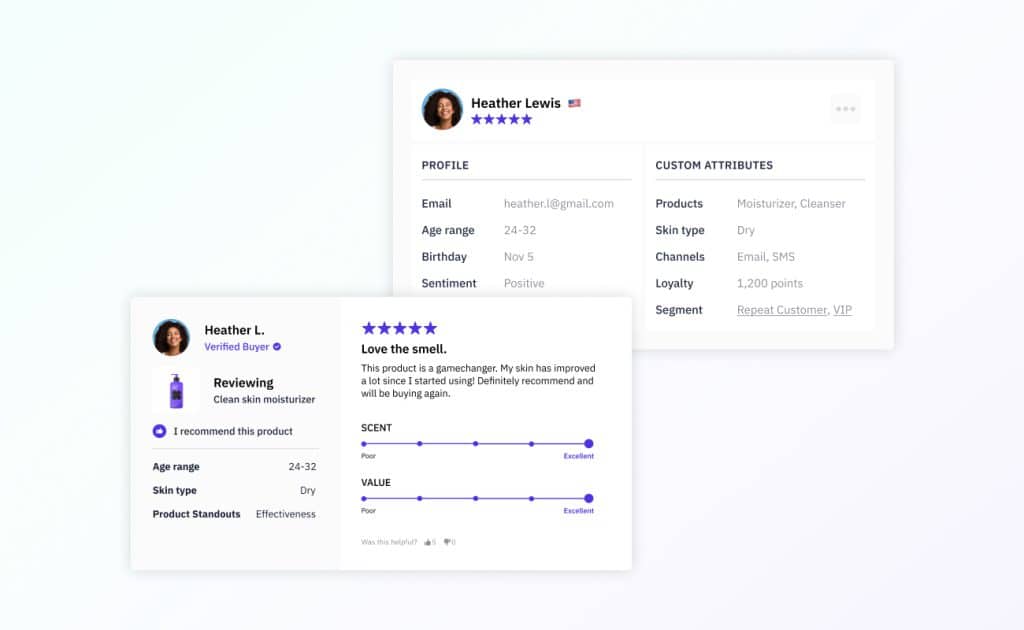
- Customer Loyalty
- Customer Retention
How to Measure Customer Loyalty in 2024: The 9 Best Ways
Megan Wenzl | Mar 14, 2024
Apr 11, 2023 | 8 minute read

Lindsay Kolinsky
Director of Marketing
In our last blog, we explored the various benefits of offering consistent and memorable customer experiences, and why Shopify brands should be focused on implementing a cohesive and effective CX program in 2023.
In this article, we’ll highlight some specific steps that you can take to help define what an optimal CX looks for your brand, as well as how to get started on building stronger customer experiences today.
Here are four best practices for strengthening the customer experience, and measuring the success of your CX program:
When thinking about CX, online merchants often limit their focus to the experiences customers have in the earlier stages of the buying journey, such as browsing product pages, adding items to their cart, and ultimately deciding to make a purchase. But in reality, having the best buying experience in the world means nothing if your product doesn’t meet your customer’s needs.
Even when brands are confident in the overall quality of their products, it can be a challenge to ensure that customers share that same level of confidence. New customers in particular are bound to have a number of questions related to a specific product before making a purchase. Being able to provide answers to these questions as accurately and efficiently as possible is vital to building confidence and trust in a way that leads to conversions.
As mentioned in our previous blog, your customers can end up being the most effective and reliable advocates for your brand. However, research from Forrester suggests that only 12% of customers will willingly advocate for a brand after having a poor or frustrating product experience.
This is where customer reviews and user-generated content (UGC) come into play. By supplementing highly detailed product pages with in-depth reviews, in addition to customer-submitted photos and/or videos featuring your products, you significantly improve the ability of new buyers to make more informed and confident purchasing decisions. To take it a step further, Okendo gives brands the power to customize review widgets to include unique customer attributes, allowing customers to easily access feedback from those with similar needs or interests.

It’s also important to keep in mind that in-depth product reviews aren’t just useful to your customers and for the purpose of driving brand advocacy, but they also provide a steady stream of feedback that can be used to improve both your customer experience and products.
It’s no secret that rapid advancements in technology have resulted in a dramatic shift in consumer behaviors and expectations. Put simply, customers have grown accustomed to better, stronger, faster online shopping experiences, and in turn have become far less forgiving of even the slightest roadblock in the buying process.
In fact, a study conducted by the Baymard Institute in 2021 revealed that nearly 70% of online shopping carts end up being abandoned by potential customers. Moreover, some of the top reasons customers fail to complete a purchase are directly related to their experiences, including unnecessarily laborious checkout processes, unclear pricing, and a general lack of trust in the website’s handling of their personal and/or financial information.
For this reason, it’s absolutely critical to provide an increasingly seamless and intuitive buying experience across multiple touchpoints, whether it’s the initial browsing of product pages, an item being added to the shopping cart, or that crucial moment when a customer decides whether or not to make the purchase.
Of course, in order to uncover bottlenecks in the buying process and make the necessary adjustments, you’ll need to rely on the feedback of your customers. And if your potential buyers are abandoning their carts at higher rates, the best way to figure out the reason why is to simply ask them “what went wrong?”

To inquire why a customer decided not to checkout, consider asking this question in the form of a quick micro-survey. Okendo’s easily customizable surveys will integrate with the SMS or email platform of your choice, allowing your brand to deliver a shareable link containing a short questionnaire about their experience. In addition to addressing the concerns of an individual customer, over time the results will help to identify the most common reasons that potential buyers are abandoning carts, and to make adjustments to your buying experience accordingly.
As we’ve emphasized in previous blogs, personalization is an increasingly essential component of a strong online shopping experience, as well as a considerable driver of loyalty and retention. Not only are 80% of customers more likely to make a purchase when a brand leverages personalization, but providing individualized experiences has also been shown to drive up to a 15% increase in revenue.
However, your ability to personalize buying experiences depends heavily on how much you actually know about your customers. Moreover, existing and emerging restrictions around data privacy have made it more difficult for brands to collect insights about their customers through more traditional, passive methods.
This has led to an increased focus on the collection of zero-party data (ZPD), or actionable information that a customer submits voluntarily. Zero-party data can include anything from demographic information to personal interests, preferences, or behaviors, all of which can be used to create customer segments based on specific data categories, and to engage with individual customers 1:1 via personalized email and SMS campaigns.
One of the best ways to maximize the inflow of zero-party data is through the use of product reviews and surveys. But it’s critical for both of these processes to be customized to collect as much useful information as possible, while also ensuring that the information being asked for is relevant to the buying experience.

Being completely customizable and easily integrated with existing email and SMS processes, Okendo reviews and surveys can help keep your prompts entirely relevant while maximizing the quality of the information being received. For example, the addition and display of customer attributes into reviews allows you to access more granular data about the buyer while also demonstrating the relevance of the information to the specific product. Moreover, you can incentivize survey completion, as well as the submission of highly valuable UGC by customizing outreach efforts to include exclusive promotions, such as coupons and loyalty points, in exchange for the customer’s participation.
Finally, it’s important to remember that optimizing CX is not a one-and-done initiative, but rather an ongoing process that will need to be continuously adapted to the evolving preferences and experiences of your customers. In other words, if you want to sustain the success of your CX program and continue to drive up loyalty, you’re going to need a strategy for monitoring and measuring customer experiences into the future.
More specifically, it’s crucial to establish an easily accessible and constantly updated customer feedback loop as part of your broader CX program. To achieve this, you’ll need to collect customer feedback across multiple sources—i.e. reviews, surveys, and customer service interactions in a way that allows you to take action on the insights they provide and make improvements to the customer experience.

This is exactly why we recently introduced Okendo Surveys, an intuitive platform built not only to optimize a brand’s ability to collect actionable customer data and improve experiences, but also to simplify the process of monitoring and measuring the impact of CX across multiple touchpoints in the buyer’s journey.
For example, in addition to providing pre-built survey templates informed by industry standard CX frameworks, including Net Promoter Score (NPS), Customer Effort Score (CES), and Customer Satisfaction Score (CSAT), Okendo Surveys’ Customer Experience Management features allow survey responses to be aggregated alongside direct customer feedback obtained through other means, such as product reviews and customer service inquiries. By ensuring all critical CX data is readily available from a single location, it becomes significantly easier to react to customer feedback, enhance customer service processes, and continuously improve both products and experiences to reflect the evolving needs and preferences of your customers.
Tom Ross, UX Lead, Convert Digital, sums up the holistic approach that best-in-class CX brands take, saying, “Merchants with top-tier customer experience don’t settle for just website analytics. They involve their team, study returns, talk to staff, and use multiple sources of feedback to gauge customer experience and drive growth. This allows them to better understand their customers and ultimately leads to higher satisfaction and increased brand loyalty.”
Interested in learning more about what makes for a strong customer experience in 2023, and how Okendo can assist in the optimization of your CX program? Download our recently published ebook here.
Related articles
Ready to learn more?